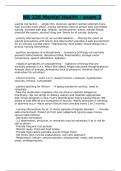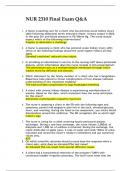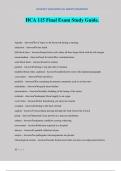BIOCHEMISTRY – LECTURE TWO PART ONE
organic molecules
Carbon has an unparalleled ability to form long chains with other carbons – this is
known as catenation. It can form stable double bonds, C=C and C=O are
especially important. Silicon does not have catenation and cannot form double
bonds. Carbon in molecules often give rise to isomers. Isomers are molecules
which have the same number and type of atoms in them, but the atoms are
arranged differently. There are three types of isomerism that are important –
structural, geometric and optical.
Structural isomers – the same number and type of atoms are arranged
different.
Geometric isomers – because carbon can form double bonds and ring
structures, there can be ‘sides’ to a molecule. With double bonds there
can be cis and trans isomers = if the desired group is on the same side it’s
a cis isomer, on different sides it’s a trans isomer. The ring structure
prevents free rotation so the molecule has sides.
Optical isomers – the carbon must have four different groups attached to
it. This is called the chiral carbon.
The alpha carbon in all amino acids except glycine have four different groups
attached, therefore amino acids exist as optical isomers called enantiomers. The
enantiomers are non-superimposable mirror images of each other. They are
referred to as D or L isomers – D from the word ‘Dexter’ meaning right
(clockwise) and L from the word ‘Laevus’ meaning left (anticlockwise). Isomers
are important to understand as biologically they can have very different
activities.
Functional groups are molecules that have certain properties and when part of a
larger molecule these properties or characteristics are conferred on the larger
molecule. Some important functional groups are hydroxyl (-OH), amine (-NH 2),
carboxyl (-COOH) and ketone (-CO).
Proteins contain mainly carbon, oxygen and nitrogen. They have many roles in
the body – catalytic (enzymes), communication (hormones), contractile (muscle
fibre), structural (collagen), transport (carrier proteins) and immunological
(antibody recognition). Proteins are made of chains of amino acids – a carbon
with an amine group, carboxyl group, H and R group. The amino acids are joint
together by peptide bonds. They have 4 levels of structure:
o Primary – order of amino acids
o Secondary – folding of the chain, alpha helix and beta sheet
o Tertiary – 3D structure, hydrogen bonds and disulphide bridges
o Quaternary – multiple polypeptide chains
One of the most important functions of carbohydrates is an intermediate store of
energy – starch in plants and glycogen in animals. Their other roles include
structural (part of DNA and cellulose in plants) and glycoproteins (cell-cell
recognition). The simplest sugars are monosaccharides – their general formula is
(CH2O) n. Glucose has the formula C6H12O6. So, there are four carbon atoms which
have four different atoms or groups attached, meaning there is 16 optical
organic molecules
Carbon has an unparalleled ability to form long chains with other carbons – this is
known as catenation. It can form stable double bonds, C=C and C=O are
especially important. Silicon does not have catenation and cannot form double
bonds. Carbon in molecules often give rise to isomers. Isomers are molecules
which have the same number and type of atoms in them, but the atoms are
arranged differently. There are three types of isomerism that are important –
structural, geometric and optical.
Structural isomers – the same number and type of atoms are arranged
different.
Geometric isomers – because carbon can form double bonds and ring
structures, there can be ‘sides’ to a molecule. With double bonds there
can be cis and trans isomers = if the desired group is on the same side it’s
a cis isomer, on different sides it’s a trans isomer. The ring structure
prevents free rotation so the molecule has sides.
Optical isomers – the carbon must have four different groups attached to
it. This is called the chiral carbon.
The alpha carbon in all amino acids except glycine have four different groups
attached, therefore amino acids exist as optical isomers called enantiomers. The
enantiomers are non-superimposable mirror images of each other. They are
referred to as D or L isomers – D from the word ‘Dexter’ meaning right
(clockwise) and L from the word ‘Laevus’ meaning left (anticlockwise). Isomers
are important to understand as biologically they can have very different
activities.
Functional groups are molecules that have certain properties and when part of a
larger molecule these properties or characteristics are conferred on the larger
molecule. Some important functional groups are hydroxyl (-OH), amine (-NH 2),
carboxyl (-COOH) and ketone (-CO).
Proteins contain mainly carbon, oxygen and nitrogen. They have many roles in
the body – catalytic (enzymes), communication (hormones), contractile (muscle
fibre), structural (collagen), transport (carrier proteins) and immunological
(antibody recognition). Proteins are made of chains of amino acids – a carbon
with an amine group, carboxyl group, H and R group. The amino acids are joint
together by peptide bonds. They have 4 levels of structure:
o Primary – order of amino acids
o Secondary – folding of the chain, alpha helix and beta sheet
o Tertiary – 3D structure, hydrogen bonds and disulphide bridges
o Quaternary – multiple polypeptide chains
One of the most important functions of carbohydrates is an intermediate store of
energy – starch in plants and glycogen in animals. Their other roles include
structural (part of DNA and cellulose in plants) and glycoproteins (cell-cell
recognition). The simplest sugars are monosaccharides – their general formula is
(CH2O) n. Glucose has the formula C6H12O6. So, there are four carbon atoms which
have four different atoms or groups attached, meaning there is 16 optical










